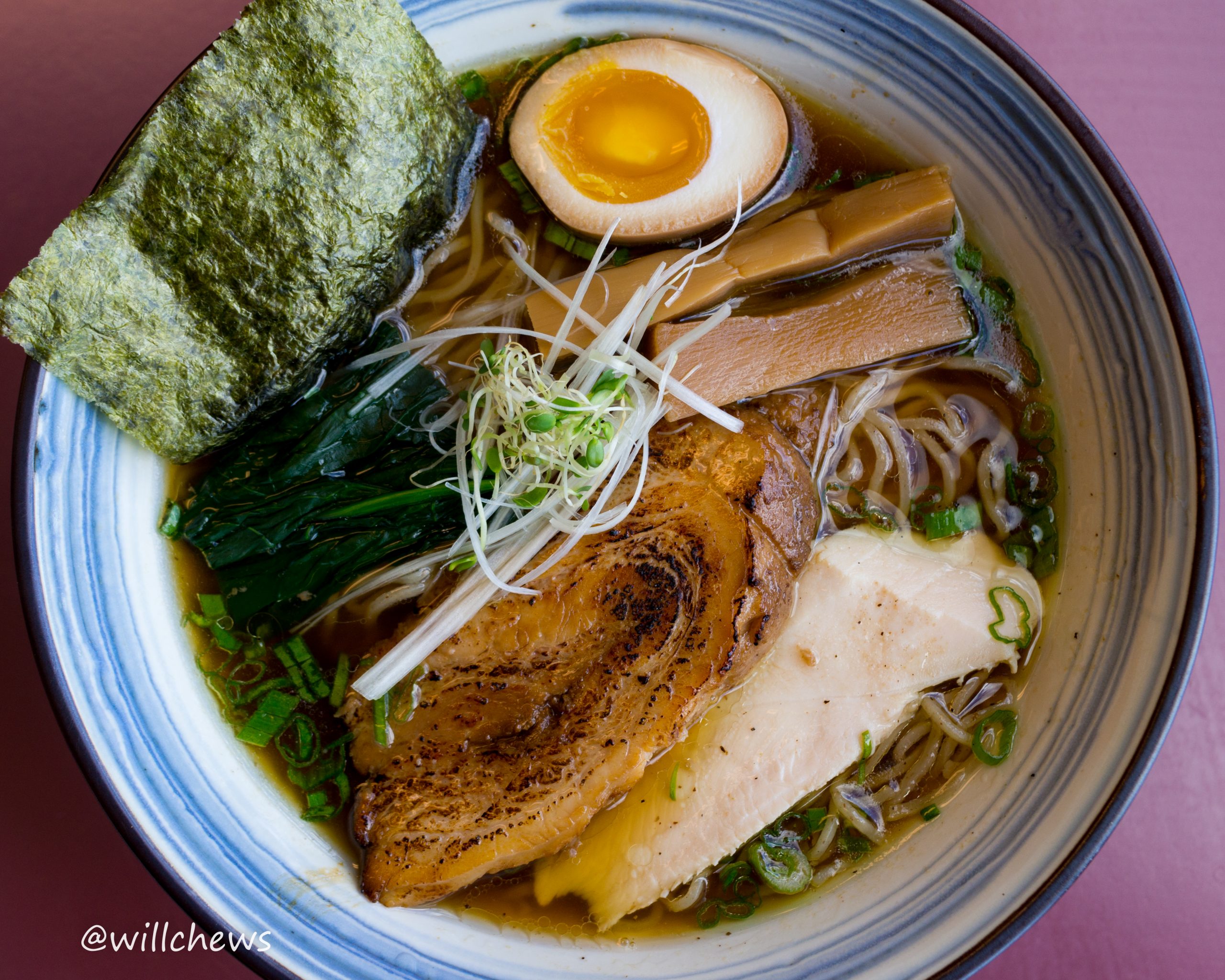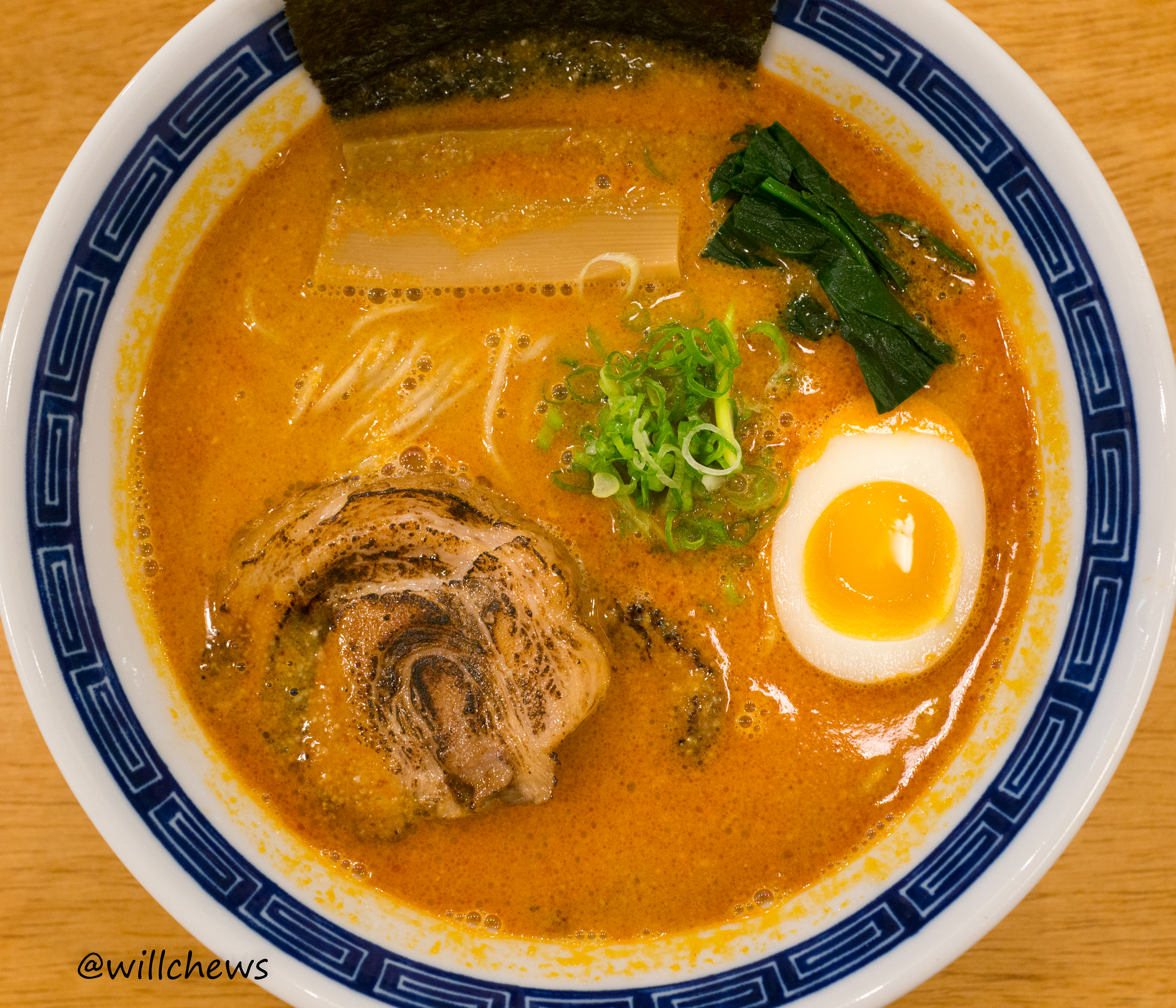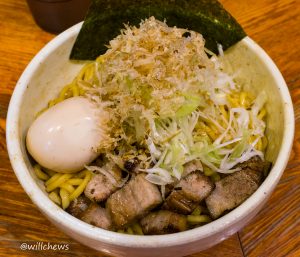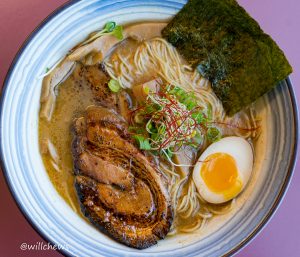Note: This is the first of several reviews of each of Hosaki’s bowls in advance of the opening of the DC location in August 2020.
I discovered Menya Hosaki entirely by chance last September because I was too lazy to take the Metro into DC from my confines in suburban Maryland, and decided to look for a lunch place out in DC suburbs. Despite its nondescript office surroundings–a pop-up in the afterhours of a office park deli–Hosaki’s menu featured ramen “gyokai,” which is rare to see in US ramen shops and is usually a pretty good indicator of a shop’s seriousness, prompted me to drive up 295 to check it out.
My intuition was correct. Eric Yoo, the owner and chef, originally trained under Shimamoto Keizo of Ramen Shack in its original location in New York’s Long Island City, which had been the only US ramen shop I deemed a
Tier 1. Unlike Daikaya and its
sister shops, which dominate the DC ramen scene but which I’ve criticized heavily from both culinary creativity and business standpoints, Yoo wants to use Hosaki to introduce flavors and methods of preparation–with just about everything but the noodles made in-house–that will resonate with Japanese-style ramen lovers and broaden the horizons of American diners who have a more constrained understanding of ramen, usually only associating it with tonkotsu or spicy miso broth.
Eric has successively accomplished that objective. While the menu contains a prerequisite
tonkotsu ramen spiked with spicy oil–the “Baltimore Sun”–the other options demonstrate a considerable breadth of different styles and flavors. I went with the Classic Shoyu since
shoyu usually a good barometer of a shop’s skills, where missteps in the preparation of the noodles, toppings, and
chashu can’t be hidden with a heavy broth. The broth is supposed to be a Tokyo-style chicken-shoyu: I thought it was very good, but I did notice that the seafood notes were much stronger than the chicken notes, and the broth could’ve been served a bit warmer. The noodles are ordered from Shimamoto and are different from the standard Sun/Nishiyama ones that supply most ramen shops in the US, with a less of a uniform yellowish hue and
alkaline bite, replaced instead with a batch of fresh noodles where pieces of the individual milled grains are visible. I did think that the noodles should’ve been cooked more al dente, or used more
kansui for a snappier/chewier profile.
Note: Upon posting an earlier version of this review last year, Eric contacted me and explained that my comments had prompted him to look into the noodle issue. The problem was not a kansui/noodle problem, but rather that his water boiler bath was running hot. Once he cut the noodle boiling time down by 1/3, the results were much better, and my subsequent visits (and reviews) reflected this.
Minor reservations of the broth and noodles aside, the chashu is mighty excellent. One can choose from two different options of roast pork belly or chicken breast: the former is slow-roasted and then finished with a blowtorch on a shichirin grill; the latter is roasted (or sous vided) and finished with a bit of lemon juice and pepper. Both are cut thick and are as good as any chashu made in a ramen shop in Japan. I generally prefer pork shoulder to pork belly for my chashu, but the blowtorch method is the best way to prepare belly for ramen. The tenderness and juiciness of the chicken chashu was particularly impressive: too many shops tend to over-roast it and end up just using shredded chicken in their ramen.
The other toppings are well-chosen, taste excellent, and are artfully plated. Of particular note is the juicy, thick-cut menma. Also, the inclusion of boiled and chopped spinach is a clear homage to Yoo’s mentor Shimamoto, who uses the same topping and prep style in his ramen.
Menya Hosaki is (finally) slated to open in August 2020, but this was promising enough of a bowl that I was willing to drive up BWE/295 several times last fall to get the best ramen in the DMV area. It was worth it, both in terms of the food at Hosaki as well as what Eric is trying to contribute to broadening the horizons of US ramen culture.
Q Factor: None (Saturday 1220)
Sense: Still feels like a office park deli
Price: Shoyu Ramen ($13) + Extra Chashu ($5) + Tax/Tip



